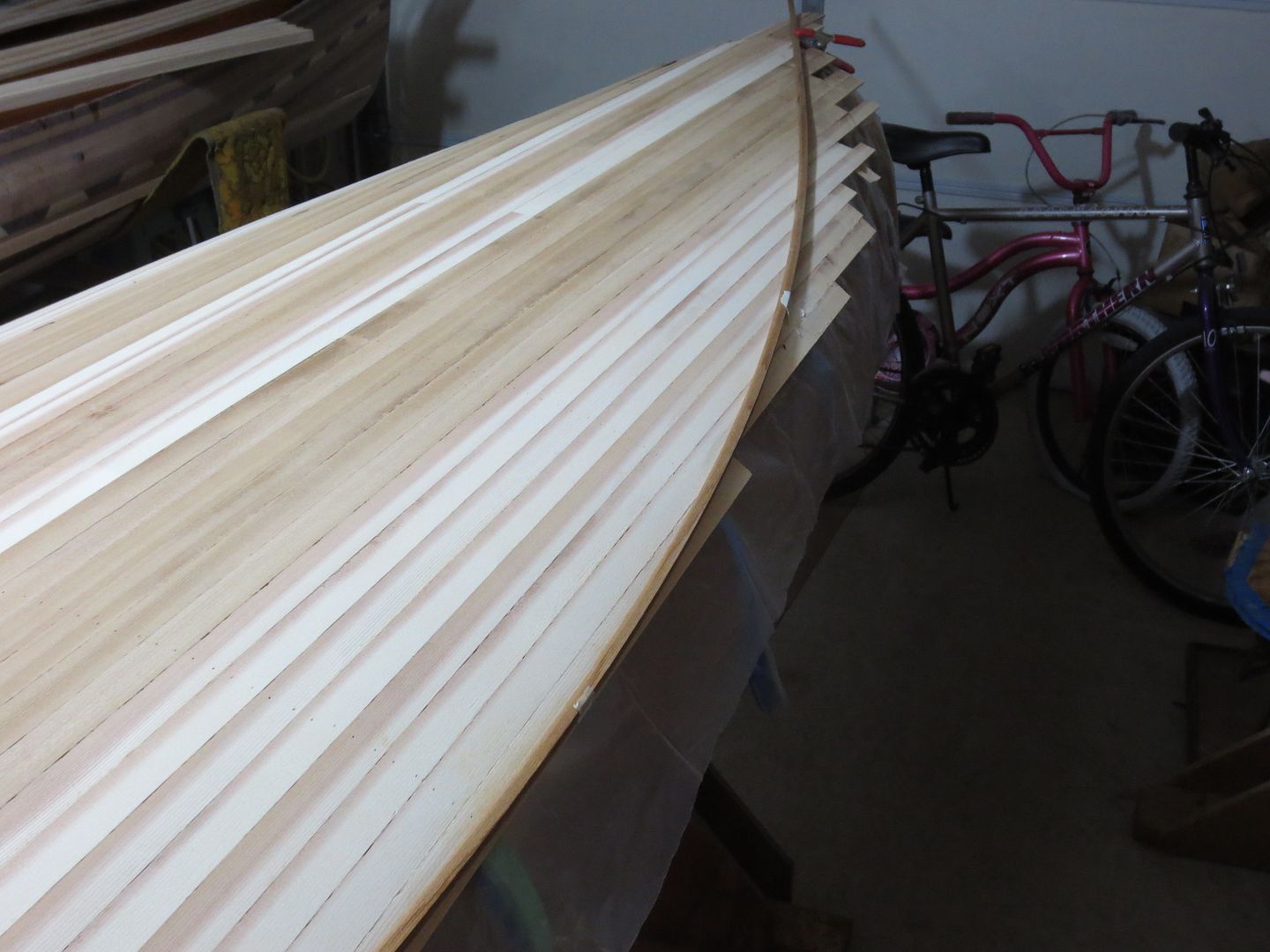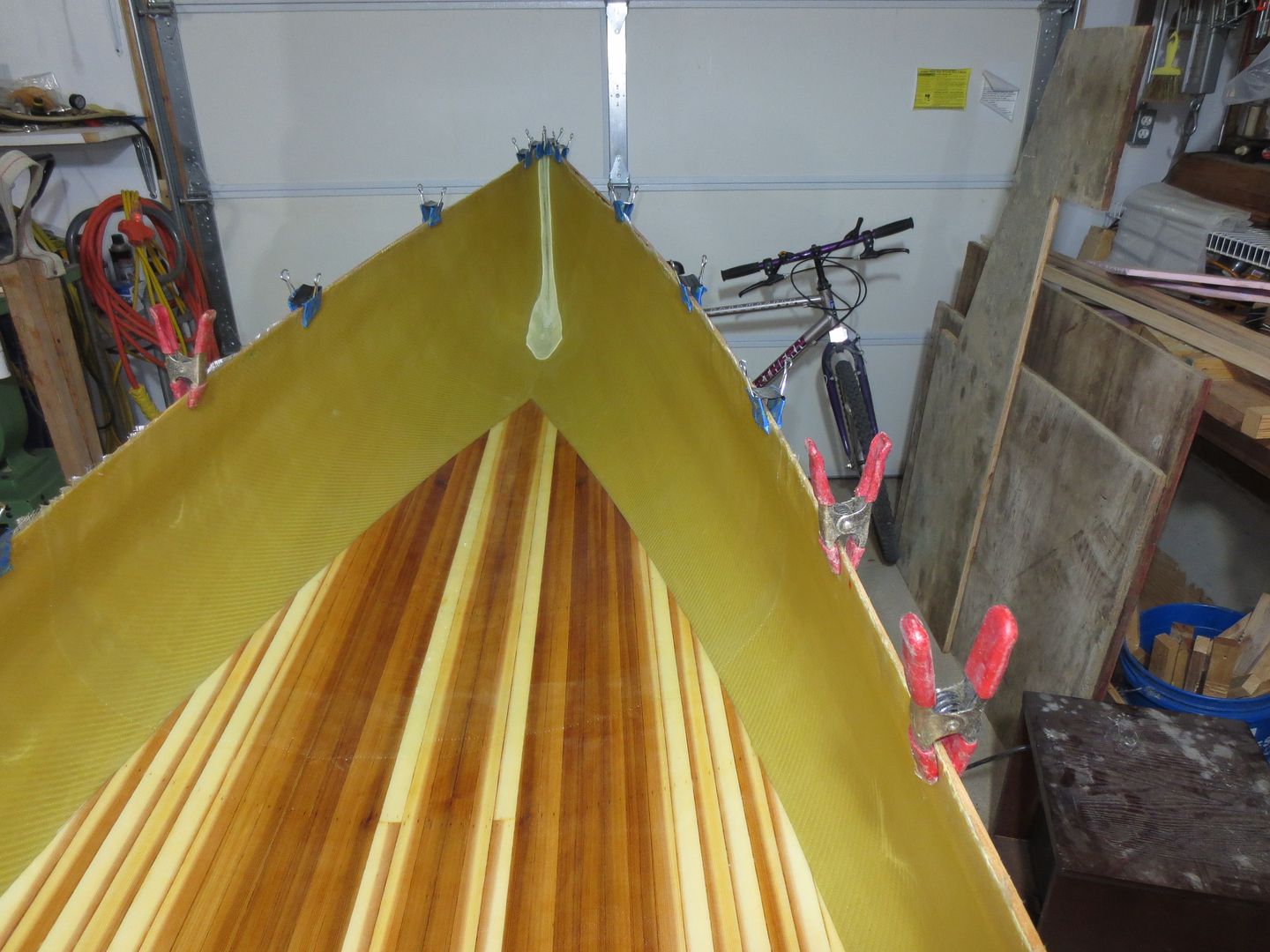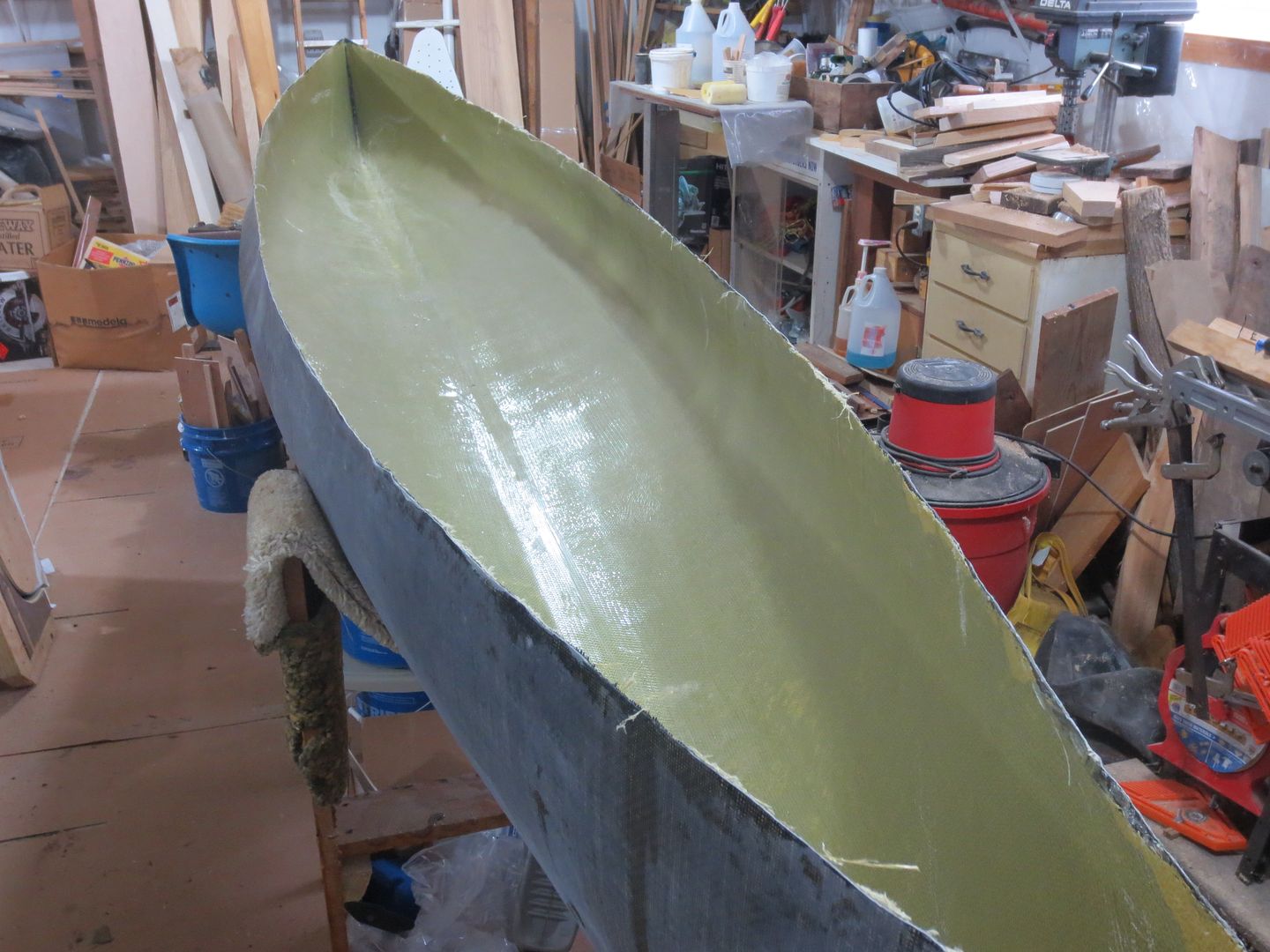Michael Duffy
canoeist canoe builder
I'm just finishing a 16 ft Hiawatha (very modified) made with 1/8" thick strips. I found myself dealing with some very unusual problems.
The most frustrating was picking a a 12' strip and having it break, I had to turn the strip on edge to reduce the breakage (took awhile to figure that one out).
The next issue was the strips wouldn't lay flat as I approached the curve. It looked like I had bent a narrow strip of sheet metal,lots of wrinkles on the inside of the bend. Tried several ways to get it flat with no success. I ended up laying strips along the keel line and working my way down. When a strip started to wrinkle I reduced the bend and added some tapered strips.
The biggest problem was sanding the hull fair. A 1/8" strip doesn't have a lot of surface area for gluing and I had to re-glue a lot of pieces. With the forms placed at 12" there was not much support. The hull would flex in as I sanded it. I ended up making some intermediate forms and placed them where needed. This helped a lot but took a lot of time to loft the new forms so they fit. I wish there was a formula that could be applied to determine the intermediate forms offsets.
The modifications to the original design included lowering the fore and aft sheer lines to get rid of the sails and widening and flatting the center for better better stability. My son who is an experienced canoeist tipped his canoe several times with a stiff wind contributing.
I'm in the middle of varnishing now and am reasonable happy with the results, I'm estimating the weight at just over 30 pound which is what I was looking for.
A question for the experts, I was at my local supplier and got into a discussion about where clear cedar could be found. I told the owner that I bought the clearest cedar decking I could find planned it down to 3/4" and then ripped 1/4+ strips. He made a comment that using quarter sawn strips made for a weak hull and I should find another solution. I've built several canoes 20' to 13' this way and aside from careless paddlers have had no problems. Any comments?
The most frustrating was picking a a 12' strip and having it break, I had to turn the strip on edge to reduce the breakage (took awhile to figure that one out).
The next issue was the strips wouldn't lay flat as I approached the curve. It looked like I had bent a narrow strip of sheet metal,lots of wrinkles on the inside of the bend. Tried several ways to get it flat with no success. I ended up laying strips along the keel line and working my way down. When a strip started to wrinkle I reduced the bend and added some tapered strips.
The biggest problem was sanding the hull fair. A 1/8" strip doesn't have a lot of surface area for gluing and I had to re-glue a lot of pieces. With the forms placed at 12" there was not much support. The hull would flex in as I sanded it. I ended up making some intermediate forms and placed them where needed. This helped a lot but took a lot of time to loft the new forms so they fit. I wish there was a formula that could be applied to determine the intermediate forms offsets.
The modifications to the original design included lowering the fore and aft sheer lines to get rid of the sails and widening and flatting the center for better better stability. My son who is an experienced canoeist tipped his canoe several times with a stiff wind contributing.
I'm in the middle of varnishing now and am reasonable happy with the results, I'm estimating the weight at just over 30 pound which is what I was looking for.
A question for the experts, I was at my local supplier and got into a discussion about where clear cedar could be found. I told the owner that I bought the clearest cedar decking I could find planned it down to 3/4" and then ripped 1/4+ strips. He made a comment that using quarter sawn strips made for a weak hull and I should find another solution. I've built several canoes 20' to 13' this way and aside from careless paddlers have had no problems. Any comments?






